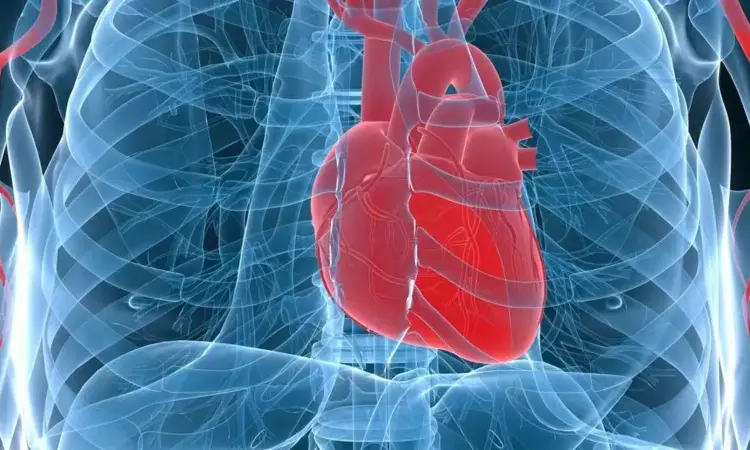- Home
- Medical news & Guidelines
- Anesthesiology
- Cardiology and CTVS
- Critical Care
- Dentistry
- Dermatology
- Diabetes and Endocrinology
- ENT
- Gastroenterology
- Medicine
- Nephrology
- Neurology
- Obstretics-Gynaecology
- Oncology
- Ophthalmology
- Orthopaedics
- Pediatrics-Neonatology
- Psychiatry
- Pulmonology
- Radiology
- Surgery
- Urology
- Laboratory Medicine
- Diet
- Nursing
- Paramedical
- Physiotherapy
- Health news
- Fact Check
- Bone Health Fact Check
- Brain Health Fact Check
- Cancer Related Fact Check
- Child Care Fact Check
- Dental and oral health fact check
- Diabetes and metabolic health fact check
- Diet and Nutrition Fact Check
- Eye and ENT Care Fact Check
- Fitness fact check
- Gut health fact check
- Heart health fact check
- Kidney health fact check
- Medical education fact check
- Men's health fact check
- Respiratory fact check
- Skin and hair care fact check
- Vaccine and Immunization fact check
- Women's health fact check
- AYUSH
- State News
- Andaman and Nicobar Islands
- Andhra Pradesh
- Arunachal Pradesh
- Assam
- Bihar
- Chandigarh
- Chattisgarh
- Dadra and Nagar Haveli
- Daman and Diu
- Delhi
- Goa
- Gujarat
- Haryana
- Himachal Pradesh
- Jammu & Kashmir
- Jharkhand
- Karnataka
- Kerala
- Ladakh
- Lakshadweep
- Madhya Pradesh
- Maharashtra
- Manipur
- Meghalaya
- Mizoram
- Nagaland
- Odisha
- Puducherry
- Punjab
- Rajasthan
- Sikkim
- Tamil Nadu
- Telangana
- Tripura
- Uttar Pradesh
- Uttrakhand
- West Bengal
- Medical Education
- Industry
High transcatheter heart valve implantation reduces conduction disturbances after TAVR: JACC

Japan: High transcatheter heart valve (THV) implantation remarkably reduces conduction disturbances after TAVR (transcatheter aortic valve replacement), a recent study published in JACC: Cardiovascular Interventions has shown. However, CT after TAVR revealed a risk for unfavourable coronary access after TAVR and sinus sequestration in TAVR-in-TAVR.
The study showed that high THV implantation versus conventional implantation was associated with a remarkable reduction in pacemaker rates (0% versus 10.8% Evolut; no difference in SAPIEN 3).
Data are scarce regarding the impact of high THV implantation on coronary access after TAVR as evaluated by postimplantation CT (computed tomography). To fill this knowledge gap, Tomoki Ochiai, Department of Cardiology, Shonan Kamakura General Hospital, Kamakura, Kanagawa, Japan, and colleagues sought to assess the impact of high THV implantation on coronary access after TAVR.
The study included 258 and 160 patients treated with SAPIEN 3 and Evolut R/PRO/PRO+ THVs, respectively. In the Evolut R/PRO/PRO+ group, the target implantation depth was 1 to 3 mm using the cusp overlap view with commissural alignment technique for the HIT (high implantation technique), whereas, for the conventional implantation technique (CIT), it was 3 to 5 mm using 3-cusp coplanar view. In the SAPIEN 3 group, the HIT employed the radiolucent line-guided implantation, whereas, for the CIT, central balloon marker-guided implantation was used. To analyze coronary accessibility, post-TAVR CT was performed.
The authors reported the following findings:
- The high implantation technique reduced the incidence of new conduction disturbances after TAVR for both THVs.
- In the Evolut R/PRO/PRO+ group, post-TAVR CT showed that the HIT group had a higher incidence of the interference of THV skirt (22.0% vs 9.1%) and a lower incidence of the interference of THV commissural posts (26.0% vs 42.7%) with access to 1 or both coronary ostia compared with the CIT group.
- These incidences were similar between the HIT and CIT groups in the SAPIEN 3 group (THV skirt: 0.9% vs 0.7%; THV commissural tabs: 15.7% vs 15.3%).
- In both THVs, CT-identified risk of sinus sequestration in TAVR-in-TAVR was significantly higher in the HIT group compared with the CIT group (Evolut R/PRO/PRO+ group: 64.0% vs 41.8%; SAPIEN 3 group: 17.6% vs 5.3%).
"The study's findings provide insight to help guide design optimization of future THV platforms and highlight the significance of considering coronary access and the need for redo TAVR," the researchers wrote. "Findings support tailoring implantation technique based on anatomical and clinical factors to facilitate lifetime management of aortic stenosis patients."
Reference:
The study "Impact of High Implantation of Transcatheter Aortic Valve on Subsequent Conduction Disturbances and Coronary Access" was published in JACC: Cardiovascular Interventions. DOI: https://www.jacc.org/doi/10.1016/j.jcin.2023.03.021
Dr Kamal Kant Kohli-MBBS, DTCD- a chest specialist with more than 30 years of practice and a flair for writing clinical articles, Dr Kamal Kant Kohli joined Medical Dialogues as a Chief Editor of Medical News. Besides writing articles, as an editor, he proofreads and verifies all the medical content published on Medical Dialogues including those coming from journals, studies,medical conferences,guidelines etc. Email: drkohli@medicaldialogues.in. Contact no. 011-43720751


